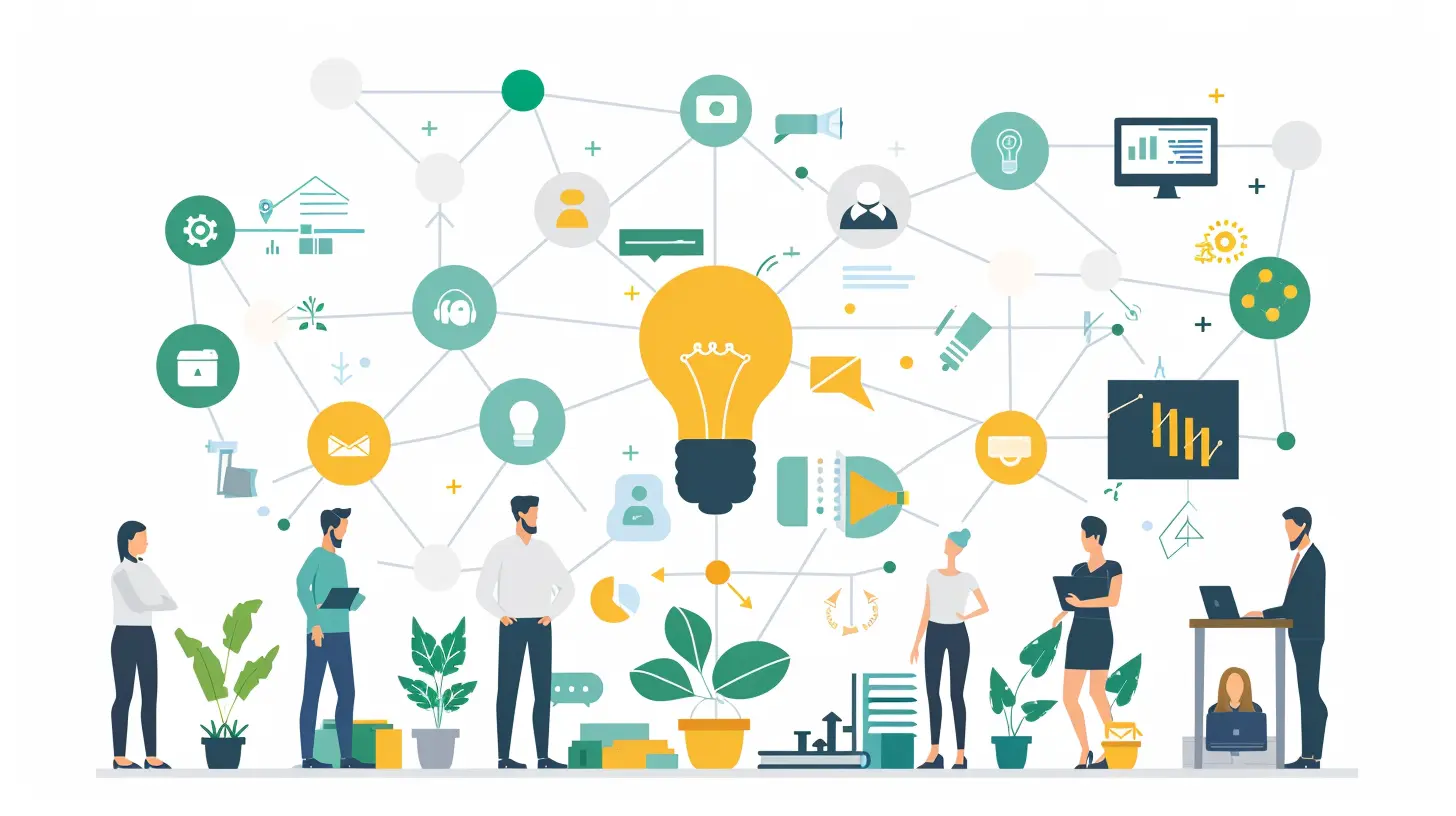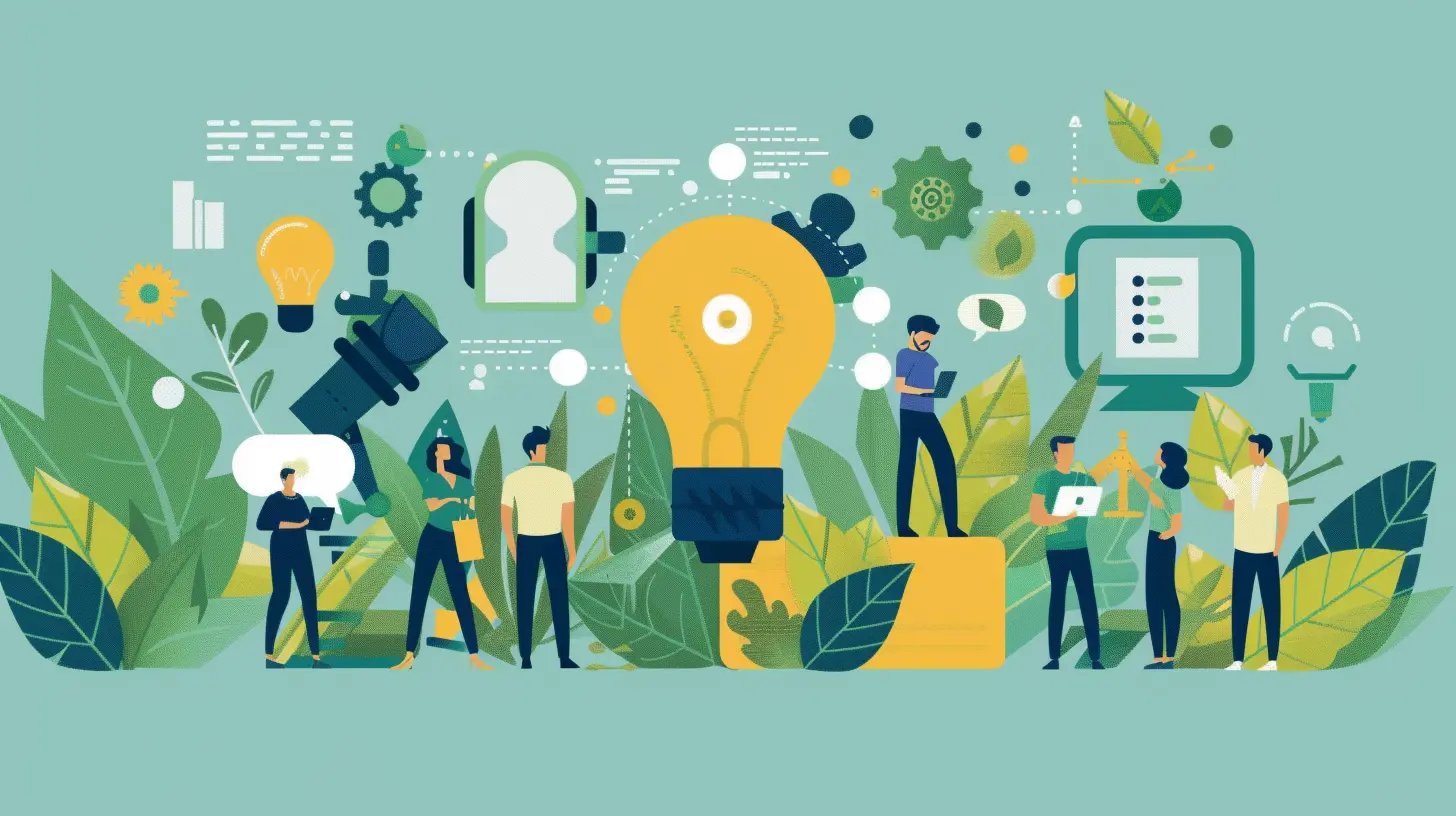How to Build an Effective Business Development Ecosystem
25 June 2025
In today’s fast-paced world, businesses aren’t just built on products or services — they grow on ecosystems.
Yep, you read that right. If you want your business to not just survive but thrive, then focusing on creating a powerful business development ecosystem is absolutely crucial. It’s a mouthful, sure, but don’t worry, we’re gonna break it all down into bite-sized, simple ideas that actually work.
So grab a coffee, settle in, and let’s talk about what it really takes to build a rock-solid business development ecosystem that fuels consistent growth and opens doors you didn’t even know existed.
What is a Business Development Ecosystem Anyway?
Imagine your business is a thriving garden. You’ve got plants (your products), water (your customers), sunlight (your marketing), and soil (your operations). Now, for that garden to bloom, you need each of these to work in harmony. That harmony? That’s your ecosystem.In business terms, a development ecosystem is a mix of strategies, people, partnerships, tools, and processes that all work together to generate opportunities and drive growth. It’s more than just sales or marketing — it’s the whole interconnected network that takes your company from point A to “Whoa, we’re scaling!”
Why Most Companies Miss the Mark
Here’s the thing — too many businesses treat growth like a cut-and-paste campaign. Slap on a sales funnel here, a CRM tool there, throw in a LinkedIn outreach, and call it a day.But growth doesn’t happen in silos. It happens when everything — your people, your process, your tech, your data — starts talking to each other and playing nice.
Truth bomb? If you're not treating your business development efforts like an ecosystem, you're leaving serious money on the table.
The Core Pillars of a Business Development Ecosystem
Let’s dig into the nitty-gritty. Here are the seven must-have components if you want to build a business development ecosystem that actually works.1. 🎯 Clear Vision and Strategy
Your ecosystem needs roots. Those roots? A strong business vision and a development strategy that aligns with it.Ask yourself:
- What do you want to achieve in the next year?
- Who is your ideal customer?
- What problems are you solving better than anyone else?
Without clear answers, you’re basically throwing darts in the dark and hoping you hit a bullseye.
👉 Pro tip: Sit down with your leadership team and map out short- and long-term goals. Reverse-engineer what needs to happen to make those possible.
2. 🧠 The Right Talent
Growth is a team sport. No ecosystem can succeed without the right people in place. And no, this doesn’t mean just hiring more sales reps.You need:
- Business developers who are strategic thinkers
- Marketers who understand customer behavior
- Salespeople who build relationships, not just pipelines
- Analysts who turn data into insights
Hire people who think beyond their job description. People who look at the bigger picture and ask, “How can we grow smarter, not just faster?”
3. 🔗 Strategic Partnerships
Nobody builds an empire alone. One of the smartest moves you can make? Partner with other businesses that complement yours.Think software integrations, co-branded campaigns, referral partnerships, even joint ventures. The magic happens when two brands bring value together that they couldn’t on their own.
It’s the classic “you scratch my back, I’ll scratch yours” — but with data, leads, and market share involved.
4. 📈 Scalable Processes
If you’re relying on one or two rockstars to hit your revenue goals each quarter, that’s not a system — that’s a gamble.You need repeatable, scalable processes for:
- Lead generation
- Qualification
- Sales follow-up
- Client onboarding
- Customer retention
Write them down, test them, optimize them. Tools help, but even the best tech won’t save you if your process is broken.
5. 🧰 Tools and Tech Stack
Let’s be honest — there’s a tool for literally everything these days. But more tools don't always mean better results.Focus on tech that actually makes your life easier and your ecosystem stronger:
- CRM (like HubSpot or Salesforce)
- Marketing Automation (like Mailchimp, ActiveCampaign)
- Sales Enablement (like ZoomInfo, Outreach)
- Data Analytics (like Google Analytics, Tableau)
But — and this is key — make sure all your tools actually talk to each other. Your CRM should sync with your email software. Your analytics should feed into your marketing automation. Otherwise, it’s just digital clutter.
6. 📊 Data-Driven Decisions
Your ecosystem should produce data like a fruit tree bears fruit. But it’s what you do with that data that counts.Are you tracking what sources bring in the best leads?
Do you know which partnerships actually create pipeline?
Can you predict which customers are most likely to churn?
Data should guide your strategy, not just decorate your dashboard. Make analysis a weekly ritual — not a quarterly panic attack.
7. 🤝 Continuous Relationship Building
Can we let you in on a little secret? The sale isn’t the finish line — it’s the starting point.A healthy business development ecosystem nurtures relationships for the long haul. That means:
- Following up after the close
- Checking in months later
- Offering new value
- Staying top of mind
People do business with those they know, like, and trust. Relationships equal revenue — and that’s the bottom line.
How to Start Building Your Ecosystem From Scratch
Feeling a little overwhelmed? Don’t sweat it. You don’t need all the bells and whistles right out of the gate. Start simple:Step 1: Define Your North Star
What’s your ultimate goal? Growth in revenue, expansion into new markets, or building recurring revenue streams? Pin that down.Step 2: Map Your Team's Strengths
Who’s already killing it in your company? Who needs support? Where are the skill gaps?Step 3: Identify Quick Wins
Which processes can you improve today? Automate follow-ups? Clean up your CRM? Nail those before you add complexity.Step 4: Build Strategic Alliances
Start reaching out to complementary businesses. Think about how you can collaborate, cross-promote, or co-develop offers.Step 5: Measure Everything
Set up basic KPIs — new leads, conversion rates, partnership ROI, etc. Track weekly and discuss in team meetings.Common Pitfalls (and How to Avoid Them)
Even the best intentions can hit speed bumps. Watch out for these common mistakes:- Chasing trends too early: Don’t jump on every tech platform or tactic just because it’s hot.
- Siloed departments: Sales, marketing, customer success — they all need to be aligned.
- Neglecting the customer voice: Feedback loops from customers help you adapt and improve your ecosystem.
- One-size-fits-all strategies: Customize your approach based on your industry, audience, and unique value.
Real-Life Ecosystem Wins
Still not sure what this all looks like in practice? Let’s take a peek at some real-world examples:- Slack: Built a community-first ecosystem by integrating with thousands of apps and putting developers in the driver’s seat.
- Shopify: Created an army of partners — developers, designers, marketers — who now drive the majority of their growth.
- HubSpot: Offers education, certifications, and partner programs that make everyone in their sphere more valuable.
What do these have in common? They didn’t build products. They built ecosystems.
Final Thoughts
So here’s the TL;DR: building a business development ecosystem isn’t about piling on more marketing tactics or hiring an army of sales reps. It’s about creating a well-oiled machine where every part — from strategy to software to human capital — works in sync.Think collaboration, not isolation. Think systems, not shortcuts.
Start small, build smart, and before you know it, you won’t just grow. You’ll thrive.
Ready to build your ecosystem? The seeds are in your hands.
all images in this post were generated using AI tools
Category:
Business DevelopmentAuthor:

Ian Stone
Discussion
rate this article
1 comments
Carrie McClure
Great insights on building a business development ecosystem! Your emphasis on collaboration and fostering relationships resonates deeply. It’s a reminder that success often comes from genuine connections and shared goals. Looking forward to implementing these strategies in my own practice. Thank you for sharing!
July 6, 2025 at 3:46 AM

Ian Stone
Thank you for your thoughtful response! I'm glad you found the insights valuable and I wish you great success in implementing these strategies.


